Colombia says much of its appeal comes nature-ally
Flavia Santoro, president of ProColombia, talks to Travel Courier about the importance of growing the Canadian market and the diversity that awaits travellers across the destination.
Lede photos: Charly Boillot
Colombian tourism officials hope the birds and the bees – along with a host of other both winged and wingless creatures – will help Colombian tourism rebound when international tourism restarts in a major way.
Colombia had been enjoying steady, year-on-year growth in visitor numbers prior to the coronavirus pandemic, with the annual number of visitors in the 2012-2018 period growing at nearly double the average world rate.
As well, growth between 2014 and 2019 rose 11.6%.
Average international tourism growth in the Americas between 2012 and 2019 was 4.4% , less than half of the 9.1% Colombia saw.
Flavia Santoro, president of Colombian tourism board ProColombia, attributes some of the increase to tourism attributes provided by Mother Nature.
“Colombia is the world’s most biodiverse country per square mile,” she says. “The secret behind Colombia’s enviable biodiversity lies in the fact that it spans six macro-regions (West and East Andes, Caribbean, Pacific, Massif, and Amazonía-Orinoquía), with almost every type of ecosystem, from humid rainforests and tropical coasts, to open wetlands and high-altitude savannahs waiting to be explored. From the vibrant Caribbean coast and gem of Cartagena, to the rugged Pacific coast and wildlife of the Chocó Pacific region, and everywhere in between, Colombia offers pristine beaches, jungle escapes and unparalleled, up-close nature encounters.
“Awe-inspiring ecosystems totally unique to Colombia allow visitors to immerse themselves in one-of-a-kind nature adventures. With the most variety of amphibians and birds in the world, the third-highest number of endemic species and 10% of the world’s flora and fauna, Colombia offers travellers the opportunity for truly incomparable experiences.
“Colombia’s Amazon region is a vast slice of rainforest, accounting for 41.8% of our national territory, and is a key offering for Colombia. It is a treasure trove still largely undiscovered and represents the ultimate adventure for tourists. Most recently the ‘sistine chapel of the ancients’ rock art was revealed, located deep in the Amazon rainforest and was confirmed to be one of the largest prehistoric rock art collections in the world. The Amazon’s national parks also provide unparalleled rainforest flora and fauna — Cahuinari, Río Puré and Amacayacu are three of the most popular protected zones and are great places to hike jungle trails, take boat trips or go bird watching.

Flavia Santoro
There is no doubt that Canada is one of the most important markets for positioning Colombia as a tourist destination, as well as a strategic commercial ally. We want to keep developing strong ties with Canadians and show them how we have been preparing during the last year. The message for all international visitors is that Colombia is a safe, biodiverse, charismatic, and culturally rich destination ready to welcome you.
“We are excited for visitors to experience the Colombian Amazon first-hand and in a responsible way. Calanoa Jungle Lodge, for example, is located just an hour’s boat ride from the city of Leticia and is a low impact retreat nestled into the lush jungle. It is worth mentioning that Calanoa Jungle Lodge was recognized as one of the world’s best hotels, according to Conde Nast Traveler’s (US) recent Gold List 2021. Formed of seven wooden cabins, the lodge aims to contribute to the conservation of biological and cultural diversity in the Amazon and works alongside the surrounding indigenous villages to support conservation, educational processes and cultural practices. Integrating design and architecture with respectful tourism, the lodge offers visitors total treehouse immersion with many of the cabins having open sides with just mosquito netting to separate guests from the incredible sounds and sights of the jungle. Like Calanoa Jungle Lodge, many of the Amazon’s lodges are solar powered and only offer electricity at certain times of day, so visitors can enjoy a digital detox and full immersion in nature. Experiencing the indigenous culture is key for truly discovering Colombia’s Amazon region and a number of lodge homestays are also available.
“Colombia offers unique landscapes, such as seeing the Sierra Nevada of Santa Marta, one of the highest snow-covered peaks in the world, while you are enjoying a sunny day on a Caribbean beach. Additionally, tourists can visit Caño Cristales, a rainbow-coloured river that is said to be the most beautiful in the world or the National Natural Park of Chiribiquete, in the Guaviare department, which is one of the most ancient geological formations on the planet.”
Santoro says Colombia offers a combination of sun, culture, nature, gastronomy, music and history.
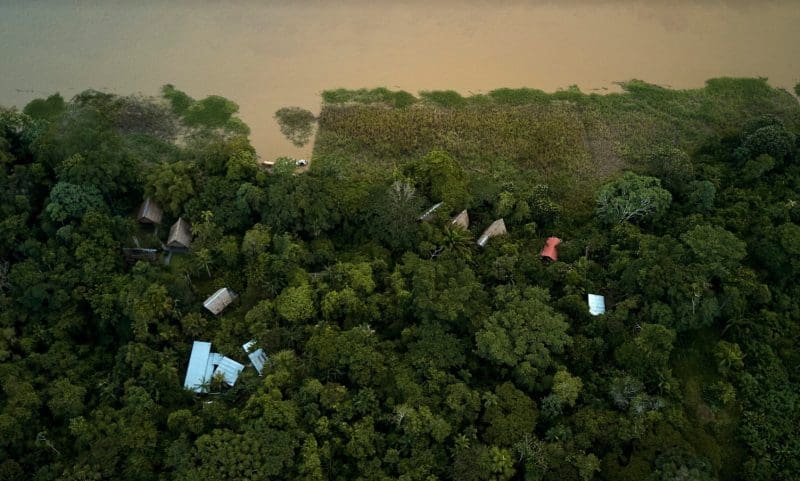
Photo courtesy: Calanoa Lodge in the Amazon
“Colombia is also a blend of fascinating cultures and rich histories, with at least 84 indigenous communities and more than 60 native languages, all evidenced by a melting pot of musical rhythms, gastronomic highlights and vibrant cities!” she continues.
Sustainability – frequently cited as something that will play an increasingly important role in the tourism of tomorrow – is a concept increasingly on the minds of Colombian tourism officials, with Santoro reporting that it’s at the forefront of the country’s tourism strategy.
“Sustainable tourism is so crucial to Colombia, that at the end of 2020, the Ministry of Trade, Commerce and Tourism achieved two main projects to promote best practices that conserve and protect Colombia’s natural and cultural heritage through responsible tourism – a development that ProColombia helped push through,” she says. “First, the ministry reformed the General Tourism Law, placing sustainability at its core. It now formally recognizes that the protection of the environment and local communities is crucial for the recovery of Colombia’s tourism industry following the pandemic, among other strategies to fortify the value chain by making it more formal and with outstanding quality. This new law supports and integrates with the second initiative known as the new Sustainable Tourism Policy, designed to create projects for conservation and to protect natural tourist attractions. Colombia is one of the only countries in the world to have such a policy.
“Colombia was also a founding member of The Future of Tourism Coalition, the most important worldwide project to promote sustainable tourism. The objective of the initiative is to prioritize the needs of destinations and communities in the post-pandemic tourism era.”
Santoro labels Colombia one of the “trendiest destinations,” noting it won nine “recognitions” at the 2020 World Travel Awards.
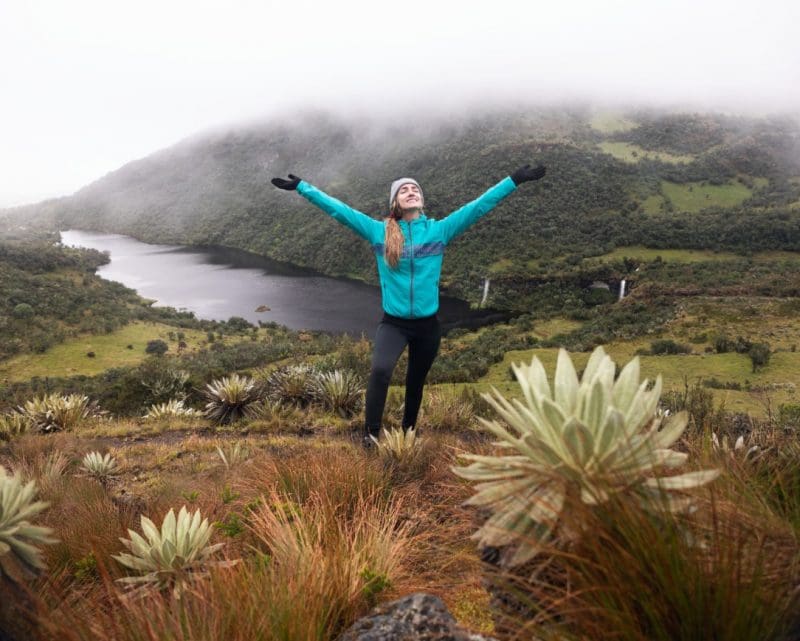
Photo courtesy: ProColombia
Much of Colombia’s tourist trade has traditionally revolved around the Caribbean-fronting city of Cartagena, home to an old quarter that has earned UNESCO World Heritage Site status because of its Spanish colonial architecture. “Cartagena is the most visited city in Colombia, following Bogotá,” Santoro reports. “Between 2014 and 2019, the city has had an increasing visitors’ growth rate of 17.3%. There is no doubt the city has a sense of charm and romance that many find difficult to resist. Cartagena is often referred to as the ‘beauty queen’ of the Caribbean coast because of its bright, colourful architecture, cobbled streets and the many white, sandy beaches and archipelagos that are found both on and off-shore. Cartagena is also a melting pot of musical heritage and the birthplace of Champeta, an upbeat music and dance genre with African ancestry, perfect for travellers looking to feel the rhythm in Colombia.”
Cartagena is regaining air connectivity, with flights to the United States and Panama having resumed. Currently, there are 26 weekly international frequencies with more than 4,218 seats available.
Colombian tourism is also capitalizing on the country’s coffee culture, with Santoro stating that coffee tourism is “thriving. Coffee culture in Colombia is pivotal to our way of life! The humble coffee bean is at the heart of many local communities across Colombia and in 2011 the Coffee Culture Landscape of Colombia was named a UNESCO World Heritage Site, demonstrating how integral coffee is to Colombian culture and its local economies.
“With almost one third of Colombia’s Andes land planted with coffee, visiting a coffee estancia is a fascinating stop on any trip to Colombia. The farmers typically demonstrate how the beans are grown, harvested, processed, dried, roasted and ground, and learning to taste Colombian coffee is an experience in itself too. Travellers can visit coffee plantations as one would wineries, touring the plantations and sampling the finest, finished product.”
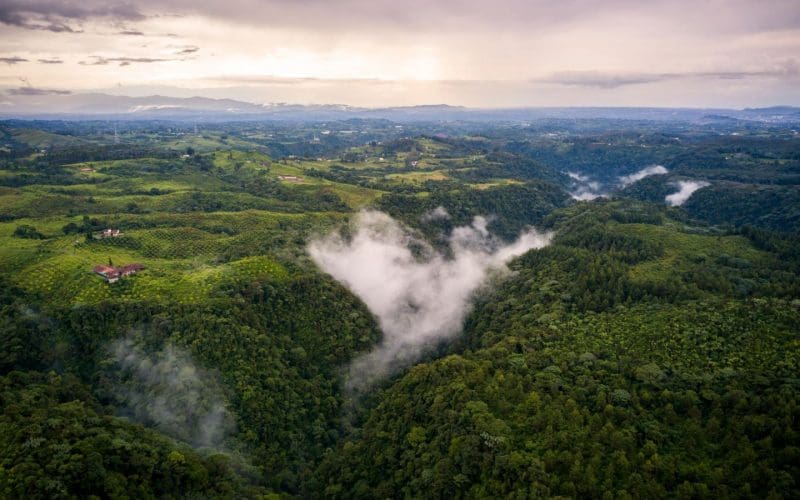
Photo courtesy: ProColombia
She says her homeland can also accommodate adventurous tourists, pointing to inland Colombia’s “Lost City” or Ciudad Perdida, an archeological site deep in the jungle of the Sierra Nevada de Santa Marta Mountains.
“Astonishingly quiet and still largely undiscovered, The Lost City can only be accessed by trekking through forests full of exotic flora and fauna, crossing rivers and waterfalls. Travellers will be awestruck by the immersive experience and the final reveal of the ancient city’s terraces, perched in the lush mountaintops.”
Colombia is the only South American country to have Caribbean and Pacific coastlines, with Santoro saying those seeking a “picture-perfect Caribbean coastal experience (should) look no further than Tayrona National Park. Palm-shaded coves, azure coastal lagoons and rainforest wildlife are found here in abundance.
Those wanting “bright city lights and musical nights” can consider the city of Cali, a hotbed of salsa music and “best known for its sizzling nightlife, musical beats and fun-loving locals.”
Santoro says Colombia has undergone a “positive transformation in recent years,”, with the long civil war having ended years ago, and adds heightened confidence in Colombia was underscored by Air Canada starting a Montreal-Bogota route in January. The airline had already been linking Toronto with the Colombian capital.
“One of Colombia’s top source markets in terms of international arrivals that decreased the least in 2020, was Canada,” she reports. “In fact, Canada’s participation in total arrivals to Colombia increased from 2.6% to 3.8%, meaning almost 4 in every 100 travellers to Colombia in 2020 was Canadian.
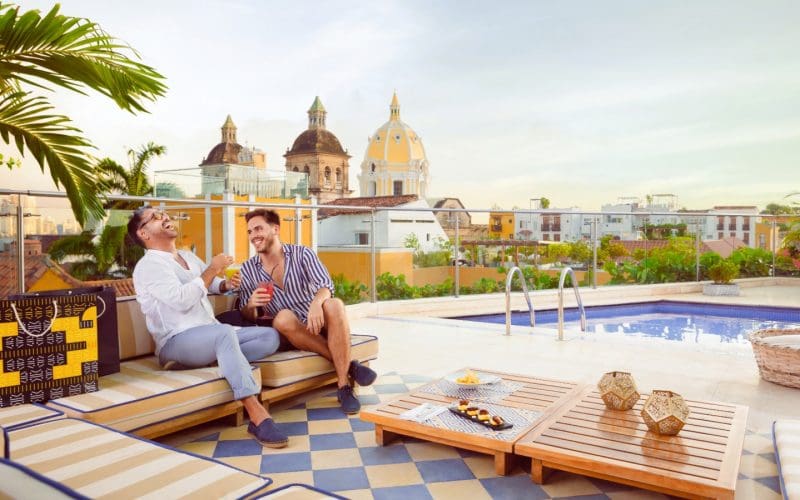
Photo courtesy: ProColombia
“I would like to remind Canadians that Colombia is not far away. We are only six hours away from Toronto and seven hours away from Montréal on a direct flight to Bogotá. Additionally, roughly the same size as Ontario, Colombia boasts enormous cultural and natural diversity having six highly distinct touristic regions. This means that, just like Canada, Colombia is a highly multicultural country and, just like Canadians, Colombians are always ready to welcome outsiders with open arms and a welcoming smile.
“There is no doubt that Canada is one of the most important markets for positioning Colombia as a tourist destination, as well as a strategic commercial ally. We want to keep developing strong ties with Canadians and show them how we have been preparing during the last year. The message for all international visitors is that Colombia is a safe, biodiverse, charismatic, and culturally rich destination ready to welcome you.”
Santoro notes that February saw ProColombia’s first ever Annual Tourism Forum in Canada. The virtual event saw 563 scheduled meetings and a series of live panels, curated video content and academic forums. “The Annual Tourism Forum was a fantastic opportunity to strengthen our ties with Canada and we look forward to welcoming more Canadian visitors to Colombia when the time is right,” she adds.
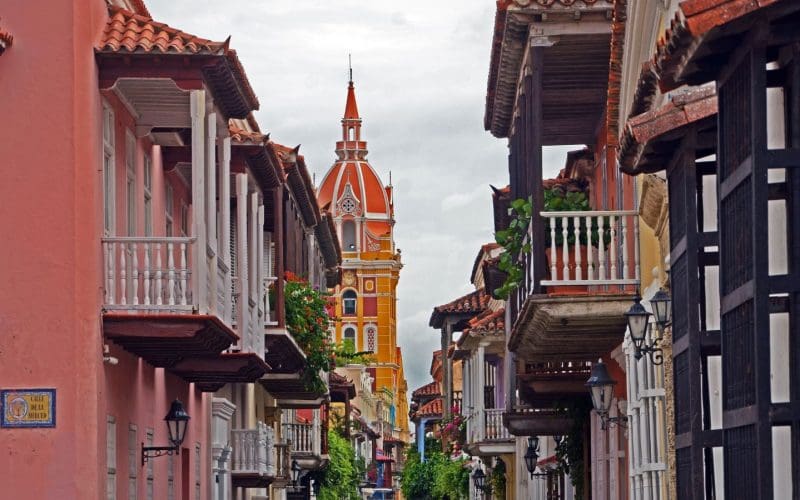
Photo courtesy: ProColombia

















